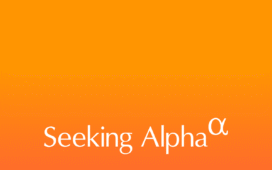syahrir maulana
Dear Shareholder:
The FPA Queens Road Small-cap Value Fund (“Fund”) returned -2.62% in the second quarter of 2024. This compares to a -3.64% return for the Russell 2000 Value Index in the same period. For the first half of 2024, the Fund returned 0.65% versus -0.85% for the Russell 2000 Value Index.
We prefer to be measured on longer time periods. As a reminder, our goal is to outperform the Russell 2000 Value Index over the full market cycle with less risk. Consistent with our historical returns, we expect to outperform in down markets and trail somewhat in speculative markets as a result of our diligent, disciplined, and patient process.
20% or Larger Russell 2000 Value Drawdowns Since Fund Inception1
|
Jun 02 – Oct 02 |
Jun 07 – Mar 09 |
Jun 15 – Feb 16 |
Aug 18 – Mar 20 |
Nov 21 – Oct 23* |
Average of Each Period Since Inception |
|
|
FPA Queens Road Small Cap Value |
-16.70% |
-50.69% |
-10.17% |
-26.74% |
-12.08% |
– |
|
Russell 2000 Value |
-28.99% |
-61.71% |
-22.55% |
-46.03% |
-25.60% |
– |
|
Downside Capture |
57.6% |
82.1% |
45.1% |
58.1% |
47.2% |
58.03% |
|
Outperformance (bps) |
1229 |
1102 |
1238 |
1930 |
1352 |
– |
Following quarter end, during the five business days of July 10 – July 16, the Russell 2000 Value Index suddenly leapt higher, rising more than 1% each day and 12.28% cumulatively. As is often the case in strong markets, the Fund lagged and was only up 7.73%, a 63% upside participation. We believe the causes of this sudden rally were technical – a reversal of the long Nasdaq 100 / short Russell 2000 positioning that had been wildly successful over the previous 18 months.[2]
The most interesting analysis of the small-cap rally came from Societe Generale (OTCPK:SCGLF) as published by James Mackintosh in the Wall Street Journal. The magnitude of share price performance over those five days correlated extremely closely and linearly to market capitalization. Even within the small and large-cap indices, smaller performed much better than larger.[3] The Fund’s holdings tend to be larger than those of the Russell 2000 Value Index, consistent with our preference for quality and our reluctance to take liquidity risk. Our positioning towards “larger small-cap companies” limited our participation in this melt up.
The following chart shows the Russell 3000 bucketed by market capitalization (size) on the X axis. On the Y axis are percentage returns from July 10, 2024 through July 16, 2024.
Small Stocks Are Juiced
Source: Societe General. The chart shows the Russell 3000 bucketed into 50 groups by market capitalization (size) on the X-Axis, where 1 represents the largest companies by market cap and 50 represents the smallest companies by market cap. The Y-axis shows the price change in each group for the 5-business day period from Wednesday July 10, 2024 through Tuesday July 16, 2024.
Market Commentary
Summary
- There are fewer quality companies in the small-cap indices than there are in the large-cap indices. This is what we mean when we call the Russell 2000 Index “junky”. 41% of the companies in the Russell 2000 have negative earnings on a trailing 12-month basis, a percentage that has more than doubled over the last 30 years.[4]
- In this letter, we focus on earnings consistency, a measure of quality that is important to our investment process. When we compare small companies to large companies of similar earnings consistency, small companies are significantly cheaper on a price-to-earnings basis.
- This is why we pound the table for active management in small-caps. When you buy a small-cap index, you get a few quality companies and a lot of junk. But discerning investors have the opportunity to assemble selective portfolios of quality small companies at reasonable prices.
Introduction
We’ve used the last several letters to write about the small-cap pond we fish in. To quickly reiterate:
- Small value has significantly underperformed large-caps over the last 10 years. But, over a longer time horizon, small value has outperformed.[5]
- Small-cap stocks are currently much cheaper than large-cap stocks.[6] But a big portion of the discrepancy is compositional. Beneath the hood, small-cap indices include many more banks and financials, a little more energy, and a lot less tech than large-cap indices. Small-caps also disproportionately over-earned post Covid and have debt servicing costs that are rising more rapidly than large-caps.[7]
- We are firmly on the quality side of the value spectrum. As bottom-up fundamental investors, we are having trouble finding new portfolio holdings that meet our requirements for quality while still trading at reasonable valuations.
We want to highlight another piece of the puzzle that we wrote about in the Q4 2023 letter. 8 In 2015, the researchers at AQR published a paper called “ Size Matters, If You Control Your Junk”. 9 Their research, as quantitative investors, showed that small-caps are generally junkier than large-caps – i.e., they score lower across the quality metrics that quantitative researchers look at such as low volatility, high margins, high capital efficiency, low leverage, high cash conversion, etc. But, once you control for similar levels of quality, small outperforms large on a consistent basis.
The two quality metrics we care about most are earnings consistency and high returns on capital. In this letter, let’s look at earnings consistency and leave returns on capital for another day. Most investors intuitively understand that earnings consistency is a good thing. A business with consistent earnings in the past probably has a business model that can earn consistently in the future. It is evidence of a business that is both less cyclical and is less dependent on environmental or macro factors outside management’s control. And earnings consistency makes it easier for the market to capitalize those earnings at a higher multiple – e.g., the bond proxy effect enjoyed by utilities and staples.
Methodology10
We looked at earnings consistency of constituents of the S&P 500 Index, the S&P 600 Index, and the FPA Queens Road Small Cap Value Fund as of Dec 31, 2023. Then, we compared price-to-earnings (P/E) ratios for sets of similarly consistent earners in those indices and the Fund. ( Readers who aren’t interested in the details of this methodology should feel free to skip to the Results section below.)
Earnings data can be very noisy (especially for small-caps) and we use a couple of adjustments to help make the data easier to work with.
- We only went back to 2016. 10 years (2016 – 2025, because we include forward earnings per share (EPS) estimates) is a shorter time frame than we usually consider when we examine a company’s historical financials. But, particularly for small-caps, the further back you go, the messier the data gets with more companies having unavailable, missing or bad data.
- We used the S&P 600 Index to represent small cap companies rather than the Fund’s benchmark, the Russell 2000 Value Index. As noted earlier, the Russell 2000 Value Index contains a large proportion of companies with negative earnings where it doesn’t make sense to talk about earnings consistency.[11] The S&P 500 Index was used to represent large cap companies.
- We used Factset’s “earnings per share before unusual items” data (i.e., “adjusted EPS”). These data exclude unusual or one-time items such as gains, impairments, legal costs, and restructurings that are noisy and aren’t tied to core business performance.
- We measured earnings consistency against the trend in earnings growth. To compute the trend in earnings growth, we used three-year averages for our start and end points. Because we are using the years 2016 – 2025, our trend line models earnings growth between 2017 (represented by taking the average of earnings in 2016, 2017 and 2018) and 2024 (average of 2023 and 2024 and 2025 estimates). This methodology helps normalize the trend by protecting against an extreme start or end point.
In the end, we came up with a number that we call “Stdev of EPS to Trend,” which summarizes how closely a company’s earnings in each individual year adhere to the overall earnings growth trend. The lower the number, the more closely annual earnings matched the trend. The higher the number, the more volatile earnings were when measured against the trend. A couple of examples should be helpful.
The top-ranking company in the S&P 600, with the lowest Stdev of EPS to Trend, is Chesapeake Utilities Corporation (CPK), a mid-Atlantic utility. Chesapeake has grown adjusted EPS at a 7.7% annual rate per the methodology above. And, over the 10 years we examined, the standard deviation of Chesapeake’s adjusted EPS versus the trend line (Stdev of EPS to Trend) is only 5.5%. The biggest discrepancies were in 2017 when Chesapeake earned $3.64, 9% above the $3.33 in trend earnings, and in 2019, when Chesapeake earned $3.56, 8% below the $3.86 in trend earnings.
The data represented in the charts below were used in our Stdev of EPS to Trend calculations.
Chesapeake Utilities Corp adj. EPS vs. Trend
Source: Factset, Bragg estimates. Stdev means standard deviation.
The 290th ranked company in the S&P 600 based on Stdev of EPS to Trend is Consol Energy (CEIX), a coal producer. Consol has grown adjusted EPS at a 25% rate, but the standard deviation of Consol’s adjusted EPS versus the trend line is 61% – significantly more volatile. For Consol, we can see the exponential curve upward in the trend, the result of earnings compounding at a relatively high rate.
Consol Energy adj. EPS vs. Trend
Source: Factset, Bragg estimates. Stdev means standard deviation.
In this analysis, we wanted to compare small-caps to large-caps on a like for like basis based on earnings consistency – our “Stdev of EPS to Trend” metric. We used the S&P 500 (the “large-cap index”) as our baseline and ordered its constituents by Stdev of EPS to Trend. Over the past 10 years, the top decile (10%) has a Stdev of EPS to Trend of 12.3% or less, the top quintile (20%) has a Stdev of EPS to Trend of 13.8% or less and the top two quintiles (40%) have a Stdev of EPS to Trend of 20.1% or less. We then compared these baskets of S&P 500 holdings to baskets of companies in the S&P 600 and in the Fund with similar Stdev of EPS to Trend values. The results are summarized below.
Results
We are looking for stocks with consistent earnings. The small-cap index, as represented by the S&P 600 Index, has fewer stocks with low earnings volatility than the large-cap index. But, when comparing stocks of similar, low earnings volatility, we found that small stocks are cheaper than large stocks on a price to earnings basis.
The Fund has a similar allocation (by weight) to stocks with consistent earnings (low earnings volatility) as the large-cap index (S&P 500) and a larger allocation to stocks with consistent earnings than the small-cap index (S&P 600).
When comparing like-for-like consistent earners (low earnings volatility stocks), our Fund’s holdings are slightly cheaper than those in the small-cap index (S&P 600) and are considerably cheaper than those in the large-cap index (S&P 500).
Let’s start with the top decile of the S&P 500, the 10% of the large-cap stocks with the lowest earnings volatility (a Stdev of EPS to Trend of 12.3% or less). On a like-for-like basis, there are considerably less of these in the small-cap index (S&P 600) than there are in the large-cap index (S&P 500).
This collection of S&P 500 constituents with low earnings volatility trades at 24.5x trailing earnings. But you can find a collection of similarly consistent earners at a significantly lower P/E in the small-cap universe – roughly 20x earnings for those in the S&P 600 and approximately 18x earnings for those in our portfolio.[12]
|
S&P 500 |
S&P 600 |
QRSVX |
|
|
Earnings Volatility |
12.3% |
12.6% |
11.8% |
|
Weight |
10.3% |
5.7% |
12.4% |
|
Count* |
13.3% |
4.0% |
8.2% |
|
Weighted Avg. Trailing PE |
24.45 |
19.75 |
18.15 |
|
Weighted Avg. Forward PE |
21.79 |
17.47 |
14.28 |
|
Weighted Avg. 7 Yr. EPS CAGR |
11.4% |
12.8% |
17.7% |
* “Count” reflects the number of securities in each category divided by the total number of securities in the index/Fund as of Dec 31, 2023.
Of course, we are only looking at four stocks in the Fund (i.e., Axos Financial, Graco, SAIC, and Fabrinet) that have a Stdev of EPS to Trend of 12.3% or less, so let’s zoom out to include a wider universe.
We get similar results when we expand to the top quintile (20%) of low earnings volatility stocks in the S&P 500 (a maximum Stdev of EPS to Trend of 13.8%). 13 Again, there are fewer low earnings volatility stocks in the S&P 600, but those stocks are cheaper. The Fund has six holdings that match the S&P 500’s low earnings volatility threshold, coming close to the proportion in the S&P 500 on a weighted basis. But the Fund’s holdings were a lot less expensive, trading at 18x trailing earnings versus 27x trailing earnings for those in the S&P 500.
|
S&P 500 |
S&P 600 |
QRSVX |
|
|
Earnings Volatility |
13.8% |
13.9% |
13.5% |
|
Weight |
20.9% |
6.8% |
17.8% |
|
Count |
17.5% |
5.3% |
12.2% |
|
Weighted Avg. Trailing PE |
27.10 |
19.28 |
18.04 |
|
Weighted Avg. Forward PE |
24.36 |
17.35 |
14.63 |
|
Weighted Avg. 7 Yr. EPS CAGR |
13.2% |
12.5% |
14.2% |
Results are similar when we expand the universe to include the top two quintiles (40%) of the S&P 500 sorted on earnings consistency (maximum Stdev of EPS to Trend of 20.1%). Microsoft, with a 7% weight in the S&P 500, is at the threshold and including it pushes the cumulative weight of this bucket up to 44%. 14 There are fewer small-cap stocks that meet this threshold, but the ones that do are cheaper. 35% of the Fund’s equity holdings meet this threshold and collectively trade at roughly 16x trailing earnings compared to 25x trailing earnings for those in the S&P 500.
|
S&P 500 |
S&P 600 |
QRSVX |
|
|
Earnings Volatility |
20.1% |
20.2% |
20.8% |
|
Weight |
44.0% |
16.3% |
35.3% |
|
Count |
32.1% |
13.4% |
24.5% |
|
Weighted Avg. Trailing PE |
25.09 |
17.90 |
15.83 |
|
Weighted Avg. Forward PE |
21.88 |
16.56 |
13.29 |
|
Weighted Avg. 7 Yr. EPS CAGR |
15.8% |
11.3% |
13.7% |
The data above is meant to be illustrative. We are not quants, although we are numerical. We follow the numbers as far as we can take them, but no further. The data in this analysis are backward-looking. There is no guarantee that the trajectory of a company’s earnings growth in the future will match its earnings growth in the past. But studies like this provide a useful starting point for sorting out the sprawl in our small-cap universe.
We don’t want to own the small-cap index and we don’t recommend that for other investors either. We want to own a selective collection of quality small companies, at reasonable valuations, that we believe can be more valuable in three to five years.
A complete list of FPA Queens Road Small Cap Value holdings and how they fared in this study can be found in the Appendix.
Portfolio Update 15
- In the second quarter of 2024, the Fund didn’t acquire any new positions. We used market volatility to rebalance the Fund toward more attractive opportunities in the portfolio.
- We incrementally added to 11 existing positions.
- We reduced our position in TD Synnex (SNX), our largest holding, as it exceeded our 5% single position risk limit. Similarly, we continued to trim our position in Deckers (DECK) as its market cap exceeded $20B. In the case of Deckers, we think the company’s operational performance has been exceptional and thus we are balancing the potential for continued gains, tax optimization, and our mandate as a small-cap fund. As of June 30th, Deckers represented 0.91% of Fund assets.
- In the quarter, we sold our remaining shares of United Natural Foods (UNFI). The decision to exit UNFI was largely consummated in the first quarter 2024 and discussed in our first quarter letter.[16]
- Brookfield’s acquisition of long-time fund holding American Equity Life (AEL) was completed on May 2. Roughly 30% of the purchase price was paid for in shares of Brookfield Asset Management (BAM), and we have elected to continue holding our BAM shares for the time being. As of June 30 th, our position in BAM represented 1.00% of Fund assets.
- The Fund’s cash position as of the end of the second quarter was 10.36%.
Trailing Twelve Months (TTM) Contributors and Detractors 17
|
Contributors |
Performance Contribution |
% of Portfolio |
Detractors |
Performance Contribution |
% of Portfolio |
|
TTM |
|||||
|
Fabrinet |
3.41% |
4.9% |
MasTec |
-1.25% |
0.6% |
|
Sprouts Farmers Market |
2.65% |
2.8% |
Darling Ingredients |
-1.01% |
1.7% |
|
Deckers Outdoor |
1.79% |
2.3% |
IAC |
-0.80% |
2.3% |
|
ServisFirst Bancshares |
1.50% |
3.4% |
Arcadium Lithium |
-0.68% |
0.4% |
|
TD Synnex |
1.11% |
4.8% |
Vishay Intertechnology |
-0.61% |
2.2% |
|
10.47% |
18.1% |
-4.35% |
7.3% |
Trailing Twelve Months (TTM) Contributors[18]
Fabrinet (FN) is a contract manufacturer of optical communications components and modules. The company has a dominant position in hard-to-replicate precision-manufacturing technologies and an enviable track record of execution. The majority of Fabrinet’s sales are to networking equipment manufacturers, but it has been successfully diversifying into the data center, industrial, auto, and medical end-markets. FN’s stock jumped after reporting June 2023 earnings – datacenter sales increased 50% sequentially and more than 100% over the previous year, driven by their 800-gigabyte transceivers for Artificial Intelligence applications. The company also announced that Nvidia is a 10%+ customer.
Fabrinet was a top-five holding in the Fund before its June 2023 earnings announcement. Since then, the stock has appreciated considerably and we have trimmed in keeping with our risk management policies. Given the growth in its forward earnings estimates, Fabrinet trades in line with its historical earnings multiples and remains a top five position for us.
Sprouts Farmers Market (SFM) is a natural grocer with great merchandising and best-in-class gross margins. 19 The company has attractive returns on capital, great new store economics, and they are accelerating their unit growth from 12 stores a year to 35 stores in 2024 on a base of roughly 400 stores. Over the past year, the stock has performed well after reporting strong operating results and from a low initial valuation. 20 The stock price jumped when the company reported 2023Q4 results and gave strong 2024 guidance on February 22, 2024. We have maintained our position and allowed it to appreciate. Although SFM’s share price has increased faster than bottom line results, we believe SFM still trades in the “range of reasonableness” for a high-quality, non- cyclical franchise that can reinvest capital at attractive rates of return.
Deckers (DECK) is a footwear and apparel company that owns the UGG, Hoka, Teva, Sanuk, and Koolaburra brands. We think management has done a terrific job growing and extending the UGG franchise. Now they are replicating that success with Hoka running shoes, which surpassed $1 billion in sales in 2023. At over thirty times forward earnings (as of June 30, 2024), we have weighed Deckers’ valuation against the quality of its management team, strong brands, and net cash balance sheet and have trimmed our position. We first bought a small position in Deckers in 2015 and 2016 when the company was struggling with supply chain issues. Its stock price has increased more than ten times since then because of excellent operating performance, and we have trimmed all the way up. Given the company’s exceptional financial performance and growth, the stock trades on the higher side of our “range of reasonableness” and we have continued to trim accordingly.
ServisFirst Bancshares (SFBS) is a conservatively run lending franchise helmed by Tom Broughton. Tom hires local bankers but doesn’t build branches – this allows for best-in-class efficiency metrics while maintaining a strong and conservative lending culture. Return on equity (ROE) and average earnings per share growth were near 20% for the 10 years through 2022 – very attractive for a conservative, plain vanilla commercial lender. 21 SFBS’s share price declined significantly with other regional banks in 2023 as rising rates put pressure on deposit pricing, NIMs (net interest margins), and ROE (return on equity). Shares are up since the depth of regional banking crisis, and during the Q1 2024 earnings call, management said that NIM is improving as loan growth re-accelerates and the asset side of their balance sheet reprices higher.
TD Synnex (SNX) is an information technology distributor formed through the merger of Tech Data and Synnex in 2021. IT distribution is an attractive business model that grows at a GDP+ rate with the opportunity for margin improvement through selling more software and services, although with some cyclicality. The IT distributors have historically traded cheaply, usually at less than 10x earnings. 22 We have owned Synnex since 2012 and Tech Data from 2010 until it was taken private by Apollo in 2020. SNX has performed well on the back of a strengthening IT market, particularly for PCs.
Trailing Twelve Months (TTM) Detractors
MasTec (MTZ) is a contractor that builds and repairs infrastructure for telecoms, electric utilities, oil and gas pipelines, and the clean energy industry. The company benefits from strong spending for 5G in telecom and government support (including the Infrastructure Investment and Jobs Act) for clean energy and the electrical grid. 23 The Mas brothers have an impressive history of rolling up smaller players and growing earnings, most recently in the electrical and clean energy spaces. However, we became uncomfortable with the low margins and competition in the electrical utility and clean energy businesses. On Aug 4, 2023, in its Q2 2023 earnings release, the company reduced guidance, and we began to exit our position, partially in Q3 2023 and fully by the end of Q4 2023.
Darling Ingredients (DAR) is the world’s largest rendering operation with about 17% of the global market and a higher share in the core U.S. market. 24 The business is one part industrial where scale and route density are big advantages – they collect unused animal waste from slaughterhouses and butchers, and one part commodity – their plants process this waste into fats, bone meal and ingredients that trade at prices set by the global commodity markets. Finally, DAR’s Diamond Green Diesel joint venture with Valero turns animal fats into green energy – a business that benefits from renewables subsidies and tax credits. The company took on debt to make three large acquisitions in 2022, adding additional complexity as DAR integrates the acquisitions and de-levers. The stock has sold off because of weakness in DAR’s commodity end markets, falling renewable identification number (RIN) prices, and lower earnings and guidance reported for the second and third quarters of 2023. 25 We first purchased Darling shares in 2008 and have watched as CEO Randy Stuewe has grown Darling from a minnow to a global behemoth. As of June 30, 2024, Darling trades at approximately 10x normal earnings and, despite the company’s commodity exposure and organizational complexity, we are comfortable holding a mid-sized position.
IAC is a holding company helmed by Barry Diller and Joey Levin. IAC’s model is to incubate digital businesses and then spin them off tax free. Past spinoffs include Ticketmaster, Expedia, Tripadvisor and Match.com. IAC invests opportunistically and generally runs its businesses for growth, keeping margins low and minimizing taxes. IAC’s current collection of businesses are eclectic, including DotDash Meredith (websites and magazines), Turo (AirBnB for cars), Care.com, Vivian (job board for registered nurses), and 20% and 84% of the publicly traded shares of MGM and ANGI respectively. We believe these pieces are worth significantly more in aggregate than IAC’s share price and that management will work to maximize that value for shareholders.
Arcadium Lithium (ALTM) is an integrated, low-cost, well-managed lithium producer formed by the merger of Livent, which the Fund owned, and Allkem in Australia. The merger was completed at the beginning of the year and we received, and decided to hold, shares of Arcadium. 26 The share price has declined because of volatile lithium prices that collapsed from bubbly levels at the beginning of 2023. 27 Estimates for electric vehicle production are slowing and capacity got ahead of demand; the industry is now waiting for a supply response.[28] Arcadium is an unusual investment for us. We normally avoid the commodity and materials sectors, and have kept our position in Arcadium small. But we believe Arcadium has a unique position in an industry with a strong long-term outlook. The company has low-cost production assets, is virtually debt-free, and has considerable capacity additions planned near-term.
Vishay Intertechnology (VSH) is a manufacturer of discrete semiconductors and passive components, mostly for the general industrial and auto markets. Although the industry is cyclical, competitive dynamics are stable and VSH benefits from electric vehicles and industrial electrification. Vishay’s products are similar to ball bearings but for a technological rather than a mechanical economy: high value-to-cost, and they go into nearly everything. Shares have followed operating performance that has drifted down from post-Covid highs following the industrial cycle and a slowdown in electric vehicle (EV) production. Management has an ambitious plan to grow capacity, sales, and margins. We are cautiously optimistic and have been incrementally adding to our position.[29]
Conclusion
The Fund’s cash position is a residual of the investment process. When we cannot find companies that meet our stringent criteria, we will allow cash to build. Over a long time horizon, we would prefer to own a diversified collection of quality companies (acquired at reasonable prices) instead of cash. But we weigh this objective against our reluctance to sacrifice a margin of safety and to risk the permanent impairment of capital. At quarter end, our cash position was 10.36%, within rounding of our 10% cap policy.
We do not have a crystal ball or make short-term predictions on market direction. We work from the bottom up, looking for companies with long histories of success through diverse economic environments. Our focus on the Four Pillars – balance sheet, valuation, management and industry structure – lets us sleep well at night and gives us confidence that the Fund’s holdings will be worth more in three-to-five years than they are today.
As always, and as significant co-investors in the Fund, we appreciate your trust in us to be good stewards of your capital. If you would like to discuss performance or the Fund’s portfolio holdings in greater detail, please let us know.
Respectfully,
Steve Scruggs, CFA, Portfolio Manager
Ben Mellman, Senior Analyst








